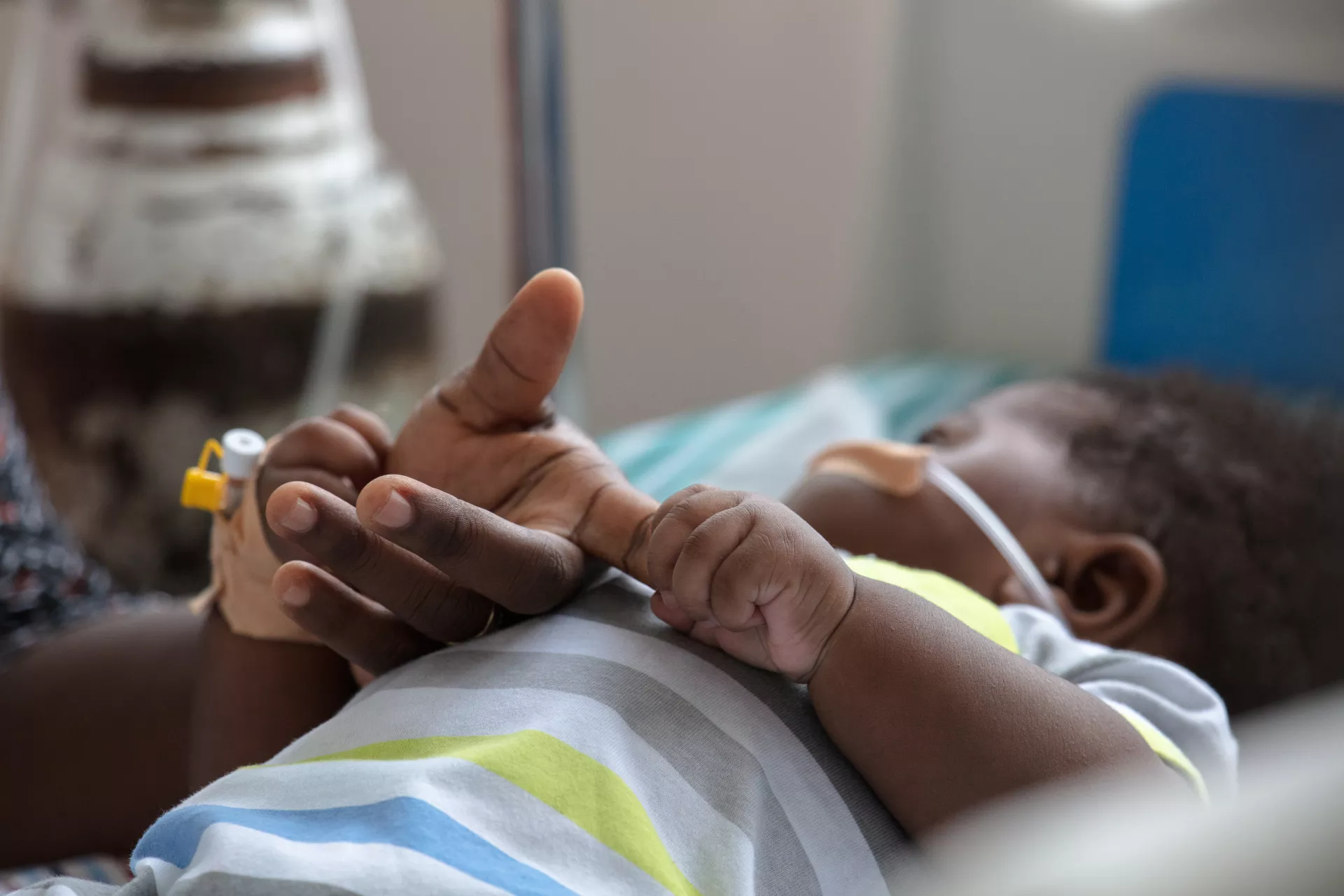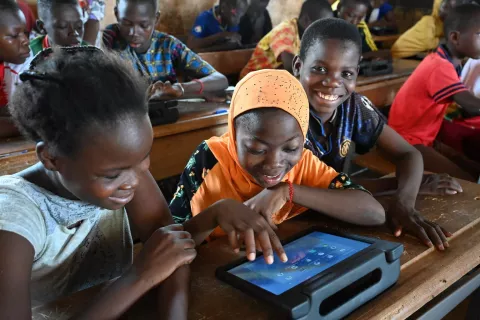Sprinting Toward Oxygen Delivery
UNICEF could save millions of lives by scaling SPRINT’s innovative oxygen delivery model. After measurable success in Ghana and Senegal, SPRINT is ready for expansion.

Pneumonia treatment is surprisingly straightforward. Oxygen and antibiotics—both relatively cost-effective solutions—can cure most cases. But oxygen therapy isn’t available in many parts of the world. Governments face several challenges that make it difficult to get oxygen to those in need. In addition to procurement and delivery barriers, special medical equipment needs to be installed at each health facility. Staff also need to be trained. These bariers create treatment gaps that have allowed pneumonia to become the leading infectious cause of death among children under five. Pneumonia claims the lives of more than 800,000 infants and children under the age of five each year, despite being treatable.
With this in mind, UNICEF launched the SPRINT Programme. SPRINT, or Scaling Pneumonia Response Innovations, supports governments—especially those with resource constraints—to expand access to oxygen therapy and antibiotics. Specifically, the programme trains medical staff and provides clinics with oxygen tanks and equipment. The SPRINT Programme also works with governments to build stronger health systems. Creating system-wide change is complex, so the SPRINT Programme supports governments in several different areas—from identifying administrative bottlenecks, to improving supply chain issues. At the same time, the SPRINT model focuses on creating policies to make oxygen more readily available. For example, getting it classified as an essential medicine can make it easier to import and deliver oxygen to clinics.
This multi-pronged approach is working. In 2020, the SPRINT Programme launched in Ghana and Senegal, where it quickly expanded access to pneumonia treatment. Just one year after UNICEF brought the SPRINT Programme to Senegal, 64 health clinics had installed oxygen equipment and 157 clinics were dispersing life-saving antiobiotics. In one clinic, staff treated a child with breathing difficulties almost immediately after the SPRINT Programme’s arrival—they were able to treat him and send him home just one day after receiving their oxygen equipment and training. The successes in Ghana and Senegal show that this innovative model is not only needed, but can start saving lives immediately.

SPRINT is ripe for expansion. After demonstrating its impact in Ghana and Senegal, the quick-to-impact model has the potential to begin saving lives in many other countries in need. Pakistan, for example, has more than 220 million citizens and one of the world’s highest rates of pneumonia in children. Oxygen is not available in most remote and low-income parts of the country, where an estimated 90,000 Pakistani children die from pneumonia each year.
If scaled, the programme could quickly create tangible results in Pakistan and many other countries across the globe. In fact, more than 20 countries have already indicated that they would be interested in adopting a programme like SPRINT (UNICEF’s Global Oxygen Survey). COVID-19, which overburdened healthcare systems and interrupted global oxygen supplies, has further underlined the need for improved health systems. Now, more than ever, is the time to expand the SPRINT Programme.
The SPRINT Programme is part of the Health Global Innovation Portfolio at UNICEF. The Global Innovation Portfolios align technical and financial resources to promising innovative solutions that can accelerate results for children in key focus areas, including Learning, Water and Sanitation, Maternal and Child Health, Climate Change, Gender Equality, Youth, Mental Health and Psychosocial Support, and Immunization. By bringing these proven solutions to more countries, UNICEF’s Office of Innovation strives to strategically and efficiently address some of the greatest and most pressing challenges facing children.
Continue exploring the Office of Innovation website to learn about the many innovative solutions and technologies the team is bringing to scale.




